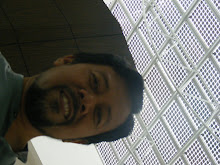The Future of Double Skin Façade Design and Installation in
Malaysia’s Building Industry In View To Support Malaysia’s Green
Building Index Program.
Assoc. Prof. Dr. Mohd Zin Kandar, Behzad Rehmani
Faculty of Built Environment, Universiti Teknnologi Malaysia Skudai Johor, Malaysia.
ABSTRACT
Designing environmental responsive building is one way to improve a building’s energy performance.
Environmental responsive building is defined as system in the building envelope or building structure that utilize the available on site energy resources in a way that minimise the need of purchased energy and maintain a satisfactory indoor environment. There are two types of systems in used i.e active and passive system. Active system works with mechanical power like solar cooling systems, systems related to ventilation and power generation systems. Passive system works naturally and examples are solar related energy systems, building integrated lighting systems, ventilation related systems, heat storage systems and multiple-skin facade system. The multiple–skin facade is an envelope construction, which consists of two transparent surfaces separated by a cavity, as an air channel. This definition includes three main elements: (1) the envelope construction, (2) the transparency of the bounding surfaces and (3) the cavity airflow.” The Goals of Multiple or Double-Skin Facades among others are (a) Cost Savings on energy consumption; (b) Noise Reduction; (c) User Control and Comfort; (d) as Natural Ventilation; (e) as Ecological Responsibility and (f) Aesthetic Aspects. Double skin façade is one of the passive design approaches especially in modern building known to reduce energy consumption and improve thermal comfort; however it is not popular in Malaysia. Security Commission Building in Kuala Lumpur designed by Hijaz Kasturi is a rare example using this double skin façade concept and proved to be one of energy efficient building, however depth study was not done to date. Other new building design with Energy Efficient in mind using double skin façades are LEO Building & Zeo building. This paper reviews study done worldwide on double skin facade technology and investigate current development in double skin façade study and how it can be implemented in building design in Malaysia to improve building performance in line with Malaysia new initiatives of Malaysia's Green Building Index launched in May
2009.
Keywords: Building Performance, Double Skin Facade, Energy Efficiency, Passive & Active Design.
[Submitted and pubished in Proceeding of International Conference of Construction Industry 2009, Padang Sumatera 28 June - 1st July 2009]
Monday, January 4, 2010
Subscribe to:
Posts (Atom)
